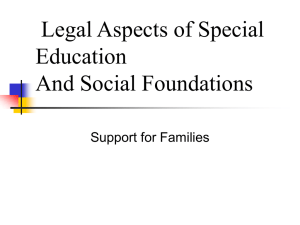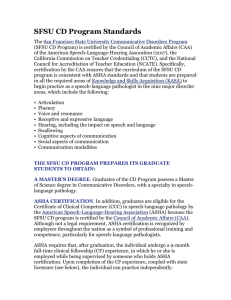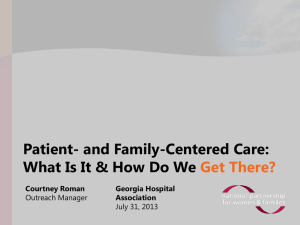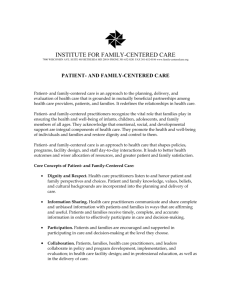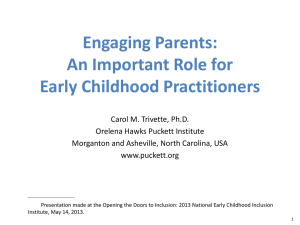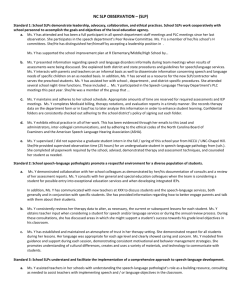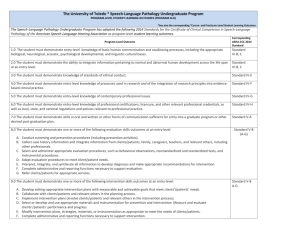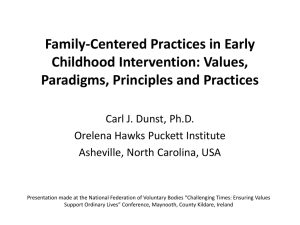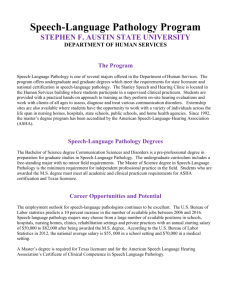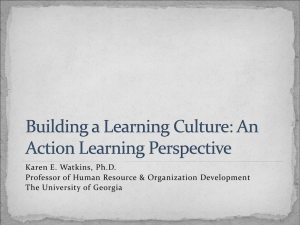Partners in Communication - CCRESA Early On Training & TA
advertisement
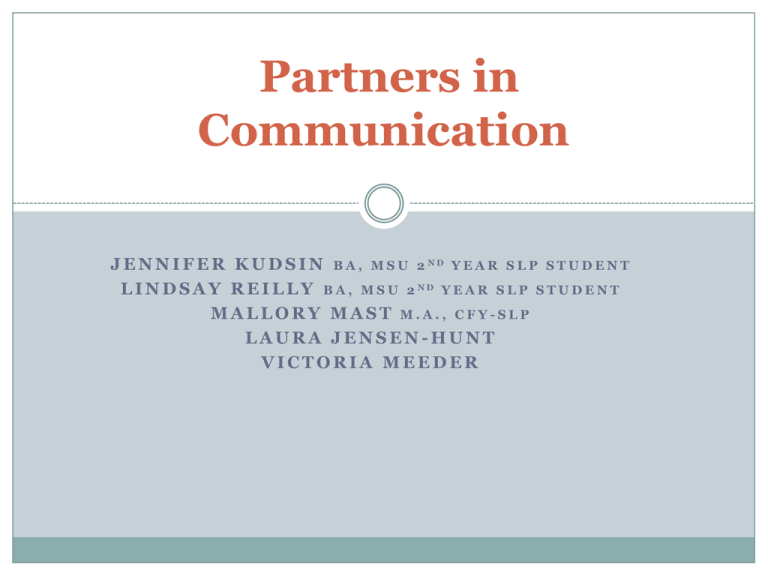
Partners in Communication J E N N I F E R K U D S I N B A , M S U 2 ND Y E A R S L P S T U D E N T L I N D S A Y R E I L L Y B A , M S U 2 ND Y E A R S L P S T U D E N T MALLORY MAST M.A., CFY-SLP LAURA JENSEN-HUNT VICTORIA MEEDER Background of Our Group Our EOT & TA presentation Discussion with professionals and parents during presentation Identified a need for a “translation tool” Continued collaboration and discussion with Partners in Communication Barriers of Communication Barrier: anything that restrains or obstructs progress or access to services. Discuss barriers from the parents’ perspectives What could keep a parent from following through with suggestions from the speech and language therapist. What would prevent the SLPs from fully understanding each parent’s perspective of speech and language therapy? Strategies that Empower Parents Knowledge is power Support the parent to take action Focus on what is and could be rather than simply what isn’t and should be Shift the focus from focusing on problems to focusing on possibilities by developing a proactive vision with clients “Connection not correction” (Madsen 2009 & Crais et al. 2006) Strategies that Empower Parents Clinician should view herself as the coach, not the star player Coaching is an interactive process of observation of the parent and reflection with the parent The coach promotes the parents ability and provides encouragement Coach supports the parent in developing and refining their skills (Rush et al. 2003) Strategies that Empower Parents Strive to gain an understanding of family resources: time, space, energy, material Learn families interest, preference, and concerns Support caretakers beyond the playgroup (Hidecker et al. 2009, Shannon 2004, ) Strategies to Empower SLPs Strategies that allow the SLP to overcome barriers from his/her own perspective Compare SLP own beliefs of therapy to the principles of the family-centered model. Evaluate the institution’s beliefs of therapy to the principles of family-centered model. Intervention team could create a self-rating scale (Crais, 1991) Resource Translation Tool for Parents and Service Providers Discuss the translation tool Discussion of ways to use the tool as a resource “the development of a real partnership with the client is the foundation of effective practice” (Madsen, 2009) Tool Example Professional Definition AAC involves attempts to study and when necessary compensate for temporary or permanent impairments, activity limitations, and participation restrictions of individuals with severe disorders of speech-language production and/or comprehension, including spoken and written modes of communication. (ASHA, 2005) Parent Definition Augmentative or Alternative Communication (AAC) is when other ways to communicate are used, such as picture or symbol boards, photographs, simple drawings, and software programs for computers. Often AAC is used when an individual has significant challenges using speech or sign language. Thank You! American Speech-Language-Hearing Association. (2005). Roles and Responsibilities of Speech-Language Pathologists With Respect to Augmentative and Alternative Communication: Position Statement [Position Statement]. Available from www.asha.org/policy. Bruce, M., DiVenere, N., & Bergeron, C. (1998). Preparing students to understand and honor families as partners. American Journal of Speech-Language Pathology, 7, 85-94. Crais, E.R., Roy, V.P., & Free, K. (2006). Parents' and professionals' perceptions of the implementation of family-centered practices in child assessments. American Journal of Speech Language Pathology, 15, 365-377. Crais, E. (1993). Families and professionals as collaborators in assessment. Topics in Language Disorders, 14, 29-40. Crais, E.R. (1991). Moving from “parent involvement” to family-centered services. American Journal of Speech Language Pathology, 1, 5-8. Hidecker Cooley, M. J., Jones, R.S., Imig, D.R., & Villarruel, F.A. (2009).Using family paradigms to improve evidencebased practice. American Journal of Speech-Language Pathology, 18, 212-221. Madsen, W.C. (2009). Collaborative helping: A practice framework for family-centered services. Family Process, 48, 103-116. Rush, D.D., Shelden, M.L., & Hanft, B.E. (2003). Coaching families and colleagues. Infants & Young Children, 16, 1, 3347. Trute, B. & Hiebert-Murphy, D. (2007). The implications of “working alliance” for the measurement and evaluation of family-centered practice in childhood disability services. Infants & Young Children, 20, 2, 109-119. Winton, P., & DiVenere, N. (1995) Family-professional partnerships in early intervention personnel preparation: Guidelines and strategies. Topics in Early Childhood Special Education, 15, 296-313.
